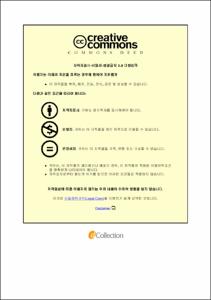Study of Reduced Graphene Oxide Property and Application
- Title
- Study of Reduced Graphene Oxide Property and Application
- Alternative Title
- Reduced Graphene Oxide 속성과 응용에 관한 연구
- Author(s)
- Woo, Seong Yong
- DGIST Authors
- Woo, Seong Yong ; Moon, Sang Jun ; Lee, Ho Chun
- Advisor
- Moon, Sang Jun
- Co-Advisor(s)
- Lee, Ho Chun
- Issued Date
- 2016
- Awarded Date
- 2016. 2
- Type
- Thesis
- Subject
- Graphene ; Graphene Oxide ; Reduced Graphene Oxide ; glucose ; blood sugar ; diabetes ; laser cutting ; 그래핀 ; 산화그래핀 ; 환원 산화그래핀 ; 포도당 ; 혈당 ; 당뇨 ; 레이저 가공기
- Abstract
-
Graphene Oxide is a substance capable of working in a typical laboratory or indoor environment. Usage is also simple and also because of the toxic materials in contact is very easy to work. If the non-conductive nature of the process itself have only column characteristics or by laser energy reduction processes occurring in the applied part "Reduced Graphene Oxide" has electrical conductivity.
While as the non-processed surface of non-conductive properties is manufactured in a form to enable this with the two characteristics simultaneously. The electrical resistance value varies according to the amount of energy input. That is the difference in electrical resistance occurs. When the process is repeated for the same position as the laser has a built-in property of the resistance value decreases. Because of this characteristic it has been utilized in the semiconductor and memory, which appears to be the next circuit making the composite itself.
In this study, the trying to make the application of the application fields to see a change with the amount of laser energy thereto and refocus the electrical characteristics of rGO.
rGO is utilized to expect sensor which using swell property in reduction processor and mixing nano particle. Particularly, recent rGO research is bio and blood base clinic (medical field) to target. This method is coping with the sensor using an expensive reactive substances that are produced by the will of the existing proteins and various enzymes to the sensor using the physical properties, the enzyme or the protein sensor a breakthrough resolved in a matter of persistent storage and expiration date. In fabricating the sensor, so that utilized rGO in glucose measurement is expected to be opened, the length of the large quantity of production at a lower price.
These should be capable of quick and easy to manufacture device to mass production. In this study, we propose a method using direct laser scribe. Laser equipment is easy to manufacture and consists of a configuration using the industrial robot or other general-purpose motor. In addition, easily and expeditiously making processor can manufacture sensor with a laser scribe. There shall be no restrictions on the disposal or storage of materials. The storage and disposal easier and self-produced and mass production of the sensor should be presented several experimental and environmental conditions for access to the produce.
This study presents a laser scriber capable of easily and quickly making how to create the rGO with the non-toxic GO. rGO sensor performance analysis that manufactured through laser fabrication process. These will be proposed the availability, future development direction and improvement of the glucose measurement. ⓒ 2016 DGIST
- Table Of Contents
-
1. INTRODUCTION 8 --
1.1 Direct Laser Scribe 8 --
1.2 Reduce Graphene Oxide Sequence 10 --
1.3 Reduce Graphene Oxide used in glucose measurement 12 --
2. SYSTEM DESIGN 14 --
2.1 Direct Laser scribing. 14 --
2.2 Motion Device Setup 19 --
2.2.1 Servo Pack Setup 19 --
2.2.2 Controller Setup 21 --
2.3 Laser Setup 23 --
2.4 Impedance Measurement Setup 25 --
3. Preparation of sample and experiment 28 --
3.1 Production of Graphene Oxide film 28 --
3.2 Production of the test sample a variety of laminate structure 31 --
3.3 Direct laser scriber work and motion profile 33 --
4. APPLICATION 35 --
4.1 Glucose detecting sensor design 35 --
4.2 Performance evaluation of the glucose sensor 36 --
5. RESULTS AND DISCUSSIONS 37 --
5.1 Direct laser scriber drawing pattern 37 --
5.2 Electrical characterization of the rGO 38 --
5.3 Optical Imaging Characteristics of rGO 42 --
5.4 SEM Imaging Characteristics of rGO 44 --
5.5 Raman spectroscopy characteristics of rGO 46 --
5.6 Glucose detecting sensor result 48 --
5.7 Discussion 49 --
6. CONCLUSIONS 51
- URI
-
http://dgist.dcollection.net/jsp/common/DcLoOrgPer.jsp?sItemId=000002230520
http://hdl.handle.net/20.500.11750/1448
- Degree
- Master
- Department
- Robotics Engineering
- Publisher
- DGIST
- Related Researcher
-
-
Lee, Hochun
- Research Interests Lithium-ion batteries; Novel Materials for rechargeable batteries; Novel energy conversion;storage systems; Electrochemistry; 리튬이차전지; 이차전지용 신규 전극 및 전해액; 신규 에너지변환 및 저장 시스템; 전기화학
-
- Files in This Item:
-
 기타 데이터 / 4.18 MB / Adobe PDF
download
기타 데이터 / 4.18 MB / Adobe PDF
download
- Appears in Collections:
- Department of Robotics and Mechatronics Engineering Theses Master



